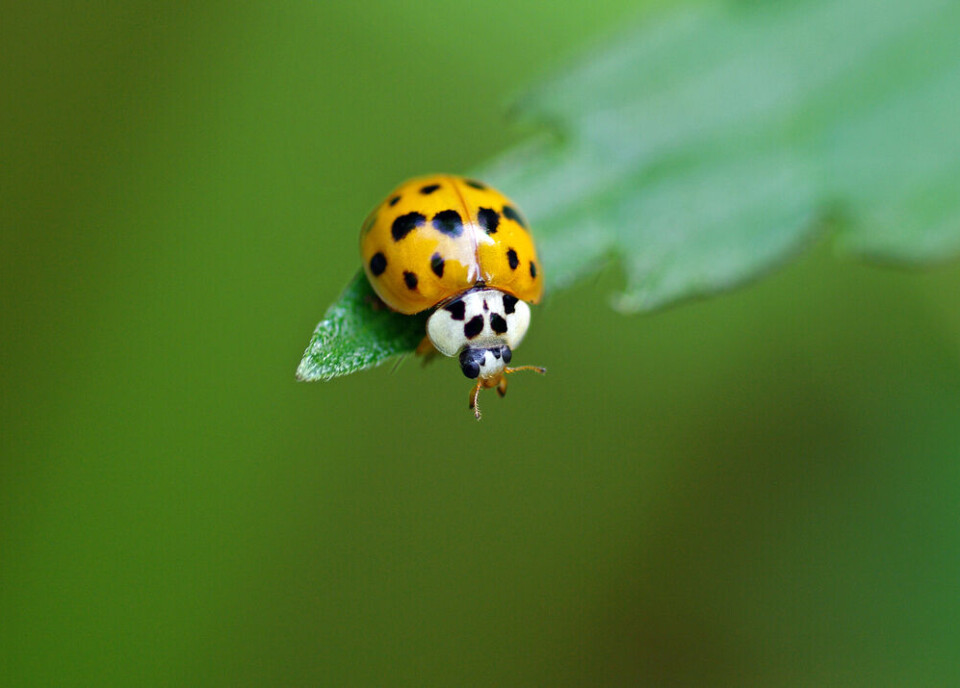-
Law proposal: commercial flights banned at night in Toulouse
Initiative seeks to reduce local noise pollution
-
Lynx warnings appear on road signs in French Alps
Purpose is to reduce collisions with the endangered species
-
French state sued over contaminated tap water
VCM contamination comes from PVC pipes installed in the 1970s and 1980s - with Dordogne the most affected department
Biodiversity: Are Asian ladybirds threatening their French cousins?
The insects can be recognised by their distinctive orange-and-black colour forms, and nature experts say they have become invasive in recent years

Asian ladybeetles – also called the harlequin, multicoloured Asian, or pumpkin ladybird – are proliferating in France, often to the detriment of their European cousins. Is this worrying for France?
The Harmonia axyridis, to give it its proper name, is an Asian variety of ladybird (also called a beetle and colloquially a ‘ladybug’, especially in the US).
It can be recognised by its orange colour with many black spots, or black colour with red spots, in contrast to the red of the European ladybird (Adalia septempunctata), which has just seven black spots.
It also seeks warmth indoors during the winter in very large groups, in contrast to the European variety, which usually goes indoors individually or in small groups.
How did it arrive in Europe?
The beetle was imported to the US and Europe in the 1980s, as an eco-friendly way to fight against aphids and whitefly. Adult Asian beetles can eat up to 90-270 per day, compared to the 50 eaten by European beetles.
Its high fertility (it lives for two to three years and can have up to 2,500 larvae) also makes it cheaper to produce than its other cousin, the two-spotted Adalia bipunctata, which is also used as a natural flycatcher.
In France, it was introduced by French national institute for agronomic research, INRA. Originally, the insects were never intended to settle long-term, not to become an invasive species.
Arnaud Estoup, geneticist and director of research at INRA at the Montpellier population biology and management centre, has been studying the evolution and spread of Asian ladybirds for the past 12 years.
He explained to France 3: "At the beginning when Asian ladybirds were released into the wild, they ate the aphids but did not settle. Most of them died.
“The strain of Asian ladybirds chosen by INRA had atrophied wings and was not very mobile, and therefore not likely to be invasive. It never became established in the long term. And the beetle is not very resistant to the cold European winter.”
Why has it spread more out of control?
Alongside the variety chosen by INRA, other varieties of the beetle have arrived in France. The Asian insect arrived from Belgium in 2003, and has since become increasingly common across the country.
Similarly, a strain from the US is now spreading rapidly.
Mr Estoup explained: “We analysed the genome of the invasive ladybirds in France, and found a fraction of genes from the INRA strain, but a large proportion of Asian ladybird genes from North America. It is this hybrid that has been spreading in north-eastern France, particularly in Alsace, for the past 10 years.”
This became controversial, to the point where ladybird producing company Biotop decided to stop making the US variety as a natural insecticide, despite the variety not being considered as invasive.
Why are researchers worried?
The Asian ladybeetle can be a major predator, and wreak havoc among other species.
Its voracious appetite means that it often does not leave enough food for European varieties. It can also show cannibalistic tendencies, eating the eggs and larvae of other insects and ladybirds.
It also carries pathogens in its eggs, which are harmless to themselves, but poisonous to European varieties if they eat them.
A 2021 study in Belgium and the UK showed a demographic decline of a range of species due to the Asian ladybeetle, especially the red two-spotted variety, whose population was found to have decreased by 40% as a result.
However, Mr Estoup has said the worrying effects may be limited. He said: “From my point of view, our ladybirds will surely become resistant and adapt, and their population will increase again.
“Sixty per cent of the species still remains, so that means there is a potential for it to adapt to this competition and rebuild its initial population over time.”
Are they dangerous to humans?
Not usually, but some can “emit toxins that can cause allergies for some people”, while their waste can “also be a source of bad smells” indoors, said Mr Estoup.
The biggest issue is when they decide to come indoors during the winter. Thousands of them can huddle together in the same space, via small holes in walls and roofs.
Christophe Brua of the insect specialist group la société alsacienne d'entomologie, said: “Once a ladybird discovers a suitable site, it sends signals to its fellow beetles via its pheromones. That's why you can find walls full of ladybirds in one house, while the one next door has none.”
How can you get rid of them from inside the house?
Vacuum them away or gather them into a plastic freezer bag, and then seal it. Put the bag into the freezer. The bugs will then sleep and later die. After 48 hours, you can take out the bag and throw the dead insects away.
Mr Estoup said that we will “not be able to eliminate” the bugs entirely, as they “have enormous populations over four continents”. However, he said that he believes that the Asian beetle will eventually become integrated into the European ecosystem.
“We are not going to see the biodiversity of beetles disappear,” he said.
Related articles
Why are there so many flies in southwest France now?
France on alert for tiger mosquitoes as temperatures rise
France to take action against Asian hornets and other invasive insects
























